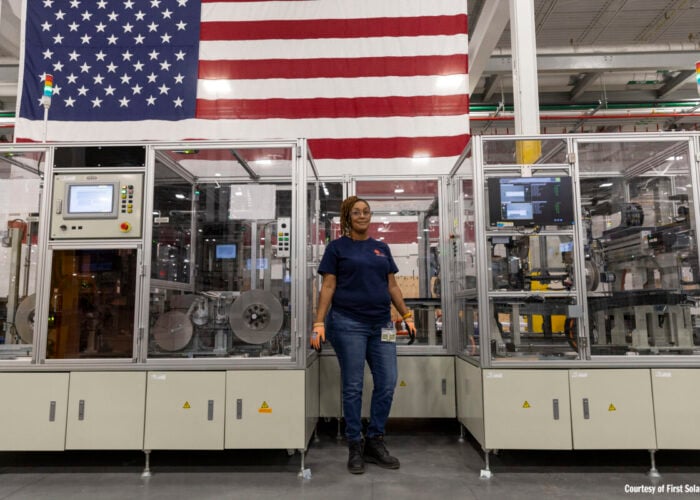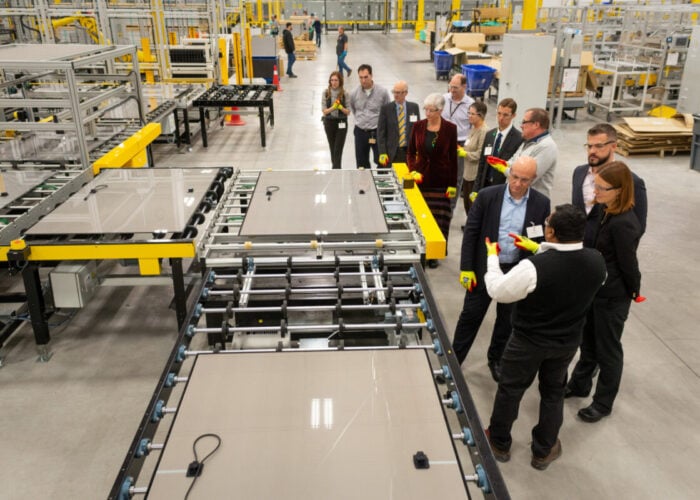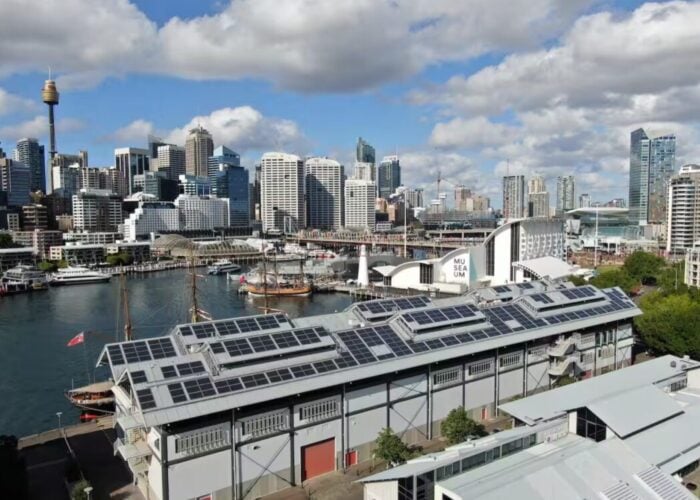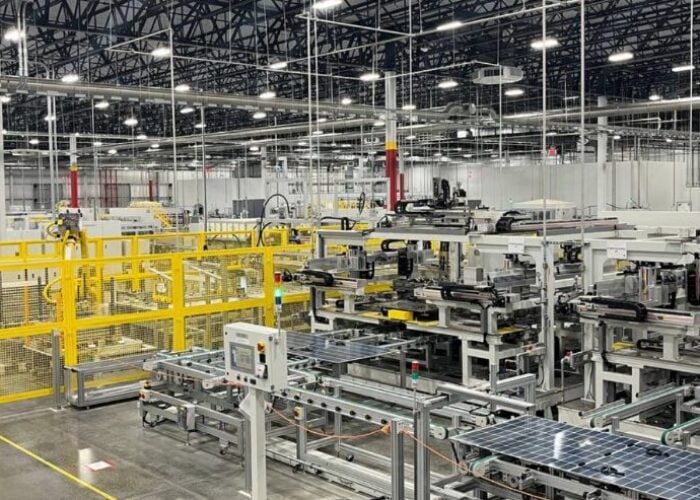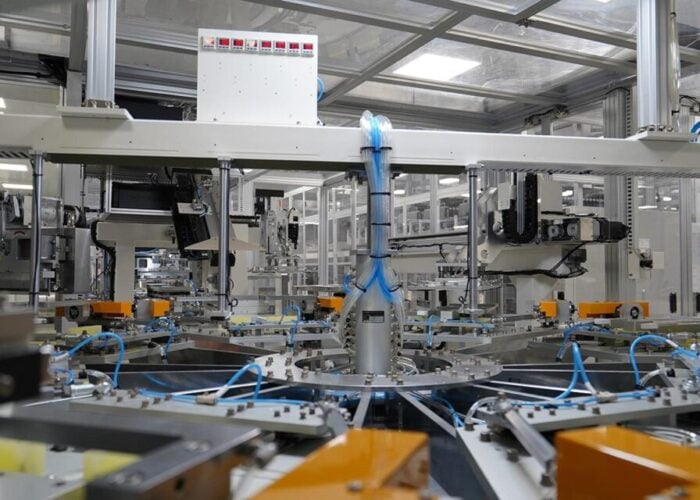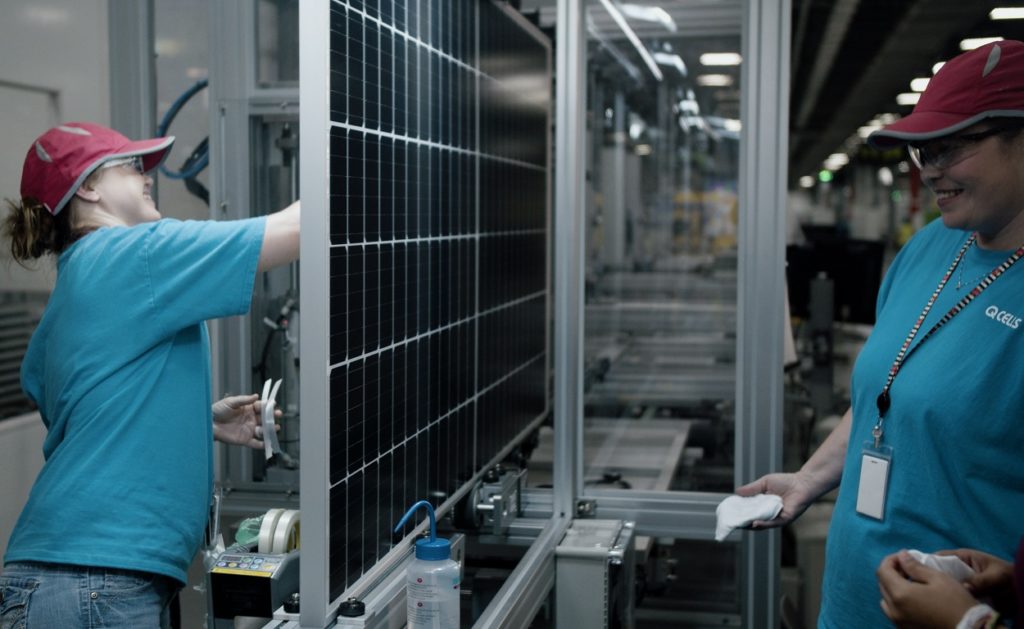
US-based solar manufacturers have enthusiastically backed proposed tax credits that they say could enable the country to meet its PV equipment demands domestically while creating tens of thousands of new jobs.
The legislation, dubbed the Solar Energy Manufacturing for America Act and introduced by Democratic Senator Jon Ossoff, would establish new tax credits to rapidly boost American solar manufacturing, providing support for each stage of the supply chain, including polysilicon, wafers, cells and modules.
Try Premium for just $1
- Full premium access for the first month at only $1
- Converts to an annual rate after 30 days unless cancelled
- Cancel anytime during the trial period
Premium Benefits
- Expert industry analysis and interviews
- Digital access to PV Tech Power journal
- Exclusive event discounts
Or get the full Premium subscription right away
Or continue reading this article for free
The bill will help diversify the US’ PV supply chain while increasing the country’s energy security, according to Scott Moskowitz, director of public affairs at Q CELLS America, which has been operating a 1.7GW module assembly plant in Ossoff’s home state of Georgia since 2019.
Moskowitz said the credits have been designed to lower the cost of solar production, enable scale and incentivise innovation, adding: “This is a huge, huge deal for the US solar industry. Senator Ossoff’s bill would immediately enable long-term, scaled investment in domestic solar manufacturing. I can’t overstate how visionary and ambitious it is.”
Under the proposals, the credits would be introduced as of 2022 at the following rates: integrated modules, US$0.11/Wdc; non-integrated modules, US$0.07/Wdc; cells, US$0.04/Wdc; wafers, US$12 per square metre; and solar-grade polysilicon, US$3 per kilogramme.
It is hoped the policy support would help US manufacturers to compete with their peers in China, a country that has steadily increased its share of global solar equipment production in recent years and now makes 75% of the world’s silicon-based modules.
According to Moskowitz, the US currently has just 7GW of module capacity. Last year, the country installed a record 19.2GW of solar, and deployment is expected to quadruple in the next decade.
One company aiming to benefit from soaring US demand for solar equipment is First Solar, which earlier this month announced plans to double its manufacturing capacity in the country with a US$680 million investment in a 3.3GWdc module plant in Ohio. The facility, expected to be operational in 2023, will make the firm’s thin film modules for the utility-scale PV sector.
Samantha Sloan, vice president of global policy at First Solar, said the proposed tax credits would help ensure that the US’ transition to a sustainable energy future will be powered by competitive solar technology produced domestically.
“After a decade of witnessing the systematic erosion of America’s leadership in solar innovation and manufacturing, and the corresponding over-reliance on imports from China, the Solar Energy Manufacturing for America Act represents a new hope for American solar,” she added.
While the initial announcement has garnered support and enthusiasm across the US PV sector, the challenge will be garnering similar levels of support from Congress to see it eventually signed into law. According to Bloomberg, Senator Ossoff is hoping to attach his proposal to a larger infrastructure package later this year.
Ossoff is also said to have consulted with both the White House and energy department, which have both signalled their support for the solar sector in recent months: President Biden with a proposed 10-year Investment Tax Credit extension and Energy Secretary Granholm’s ambition to slash the cost of US utility-scale solar by 60%, in part through a US$128 million solar research and development fund.
In addition to US solar manufacturers, renewables trade bodies have also thrown their weight behind Ossoff’s plans, with the Solar Energy Industries Association responding by setting a new target of 50GW of annual US solar production capacity by 2030.
Gregory Wetstone, CEO of the American Council on Renewable Energy, said the legislation would go a long way toward catalysing a 21st century domestic supply chain for solar technology in the US. “There has never been a greater demand for cost-effective, zero-carbon solar power, and we have a once-in-a-lifetime opportunity to invest in our domestic manufacturing capabilities to create tens of thousands of good-paying clean energy jobs.”


